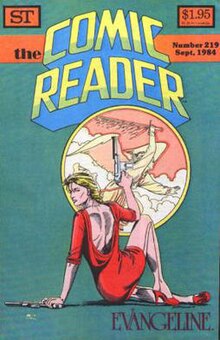
A fanzine is a non-professional and non-official publication produced by enthusiasts of a particular cultural phenomenon for the pleasure of others who share their interest. The term was coined in an October 1940 science fiction fanzine by Russ Chauvenet and first popularized within science fiction fandom, and from there the term was adopted by other communities.

Comics Buyer's Guide, established in 1971, was the longest-running English-language periodical reporting on the American comic book industry. It awarded its annual Comics Buyer's Guide Fan Awards from 1983 to circa 2010. The publication ceased with the March 2013 issue. The magazine was headquartered in Iola, Wisconsin, after originally being published in the Quad Cities region.
The Alley Award was an American annual series of comic book fan awards, first presented in 1962 for comics published in 1961. Officially organized under the aegis of the Academy of Comic Book Arts and Sciences, the award shared close ties with the fanzine Alter Ego magazine. The Alley is the first known comic book fan award.
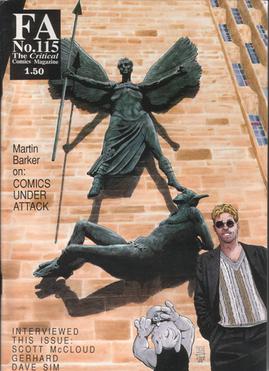
Fantasy Advertiser, later abbreviated to FA, was a British fanzine focused on comic books, founded in 1965 by Frank Dobson, the "Godfather of British Fandom." Starting out as an adzine focused on the sale of primarily second-hand comics, it eventually transitioned into a true comics fanzine. FA now operates as a comics webzine.
Jerry Gwin Bails was an American popular culturist. Known as the "Father of Comic Book Fandom," he was one of the first to approach the comic book field as a subject worthy of academic study, and was a primary force in establishing 1960s comics fandom.
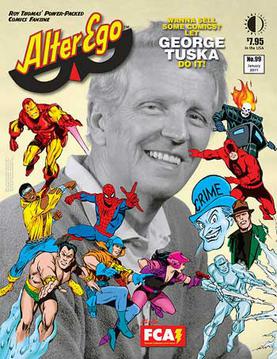
Alter Ego is an American magazine devoted to comic books and comic-book creators of the 1930s to late-1960s periods comprising what fans and historians call the Golden Age and Silver Age of Comic Books.
Notable events of 1971 in comics.

The Menomonee Falls Gazette was a weekly tabloid published in the 1970s by Street Enterprises that reprinted newspaper comic strips from the United States and the U.K. Comic strips reprinted in this publication normally fell into the adventure and soap opera category. Typically, a full week's worth of a particular strip was collected on a single page of The Gazette. Although The Gazette was available via newsstand distribution, the bulk of their sales came from subscriptions.
Notable events of 1972 in comics.
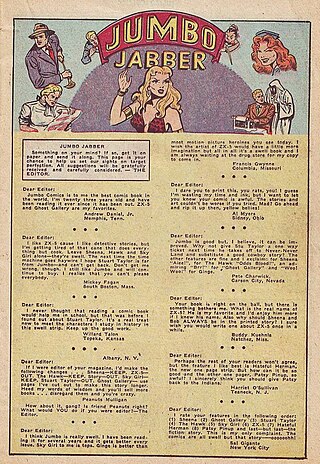
A comic book letter column is a section of an American comic book where readers' letters to the publisher appear. Comic book letter columns are also commonly referred to as letter columns, letter pages, letters of comment (LOCs), or simply letters to the editor. Letter columns appeared early on in the history of comic books themselves, and their growing prevalence — particularly beginning in the 1960s — helped create and legitimatize comics fandom. As the forum developed, the volume and tenor of letters became a reliable gauge of overall reader response to developments in the comics themselves. Letter columns remained a regular feature of most comic books until the early years of the 21st century, when they began being phased out in favor of the growing prevalence of email and Internet forums. Despite this, the 2010s saw a renaissance of comic book letter columns, and many comics titles still print them.
CAPA-alpha was the first amateur press association (APA) devoted to comic books, started by Jerry Bails in the United States in 1964.

Rocket's Blast Comicollector (RBCC) was a comics advertising fanzine published from 1964 to 1983. The result of a merger with a similar publication, RBCC's purpose was to bring fans together for the purpose of adding to their comic book collections. It also proved to be a launching pad for aspiring comic book creators, many of whom corresponded and exchanged their work through RBCC, and published work in the fanzine as amateurs.
The Academy of Comic-Book Fans and Collectors (ACBFC) was the first official organization of comic book enthusiasts and historians. Active during the 1960s, the ACBFC was established by Jerry Bails, the "father of comics fandom". A vital player in the development of comics fandom, the ACBFC brought fans of the medium together, administered the first industry awards, and assisted in the establishment of the first comic book fan conventions.
The Goethe Award, later known as the Comic Fan Art Award, was an American series of comic book fan awards, first presented in 1971 for comics published in 1970. The award originated with the fanzine Newfangles and then shared close ties with The Buyer's Guide to Comics Fandom.
Street Enterprises was a publishing company that focused on reprints of newspaper comic strips from the United States and the United Kingdom. Operating from 1971–1984, Street Enterprises is most known for the sister publications The Menomonee Falls Gazette and The Menomonee Falls Guardian, as well as for taking over publication of the comics news-zine The Comic Reader.
Martin Lock is a British comic book critic, writer, and publisher. As publisher of the fanzines BEM and Fantasy Advertiser, and then publisher of Harrier Comics, he was an important figure in British comics fandom in the 1970s and 1980s.

BEM, originally known as Bemusing Magazine, was a British fanzine focused on comic books which was published from 1973 to 1982. The brainchild of Martin Lock and billed as "The Comics News Fanzine," BEM featured American and British comics industry news and gossip, interviews, comic reviews, essays, columns, and comic strips.
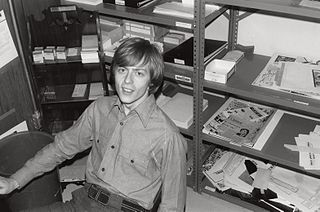
Alan L. Light is a publisher involved in comics and pop culture fandom. He is best known as the founder of The Buyer's Guide for Comic Fandom, which was the longest-running English-language periodical reporting on the American comic book industry.
David A. Kaler is an American writer. He was a primary force in establishing 1960s comic book fandom, particularly through the form of the comics convention. Later, he had a short-lived career as a comics writer for such publishers as Charlton Comics, DC Comics, and Warren Publishing.
Mark Hanerfeld was an American writer and editor in the comic book industry. Starting out in the world of comics fandom, Hanerfeld is most well known for co-creating Abel, the "host" of the DC Comics horror comics anthology House of Secrets, as well as being the model for the character's appearance.
